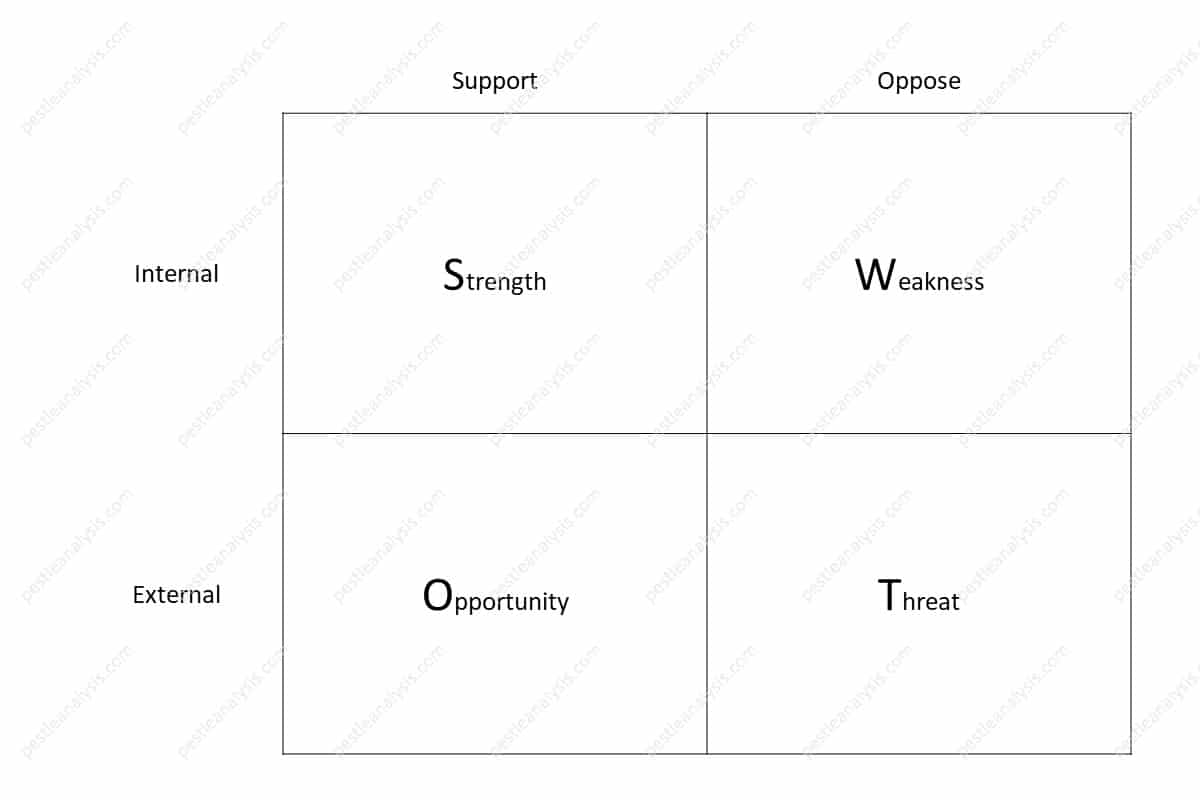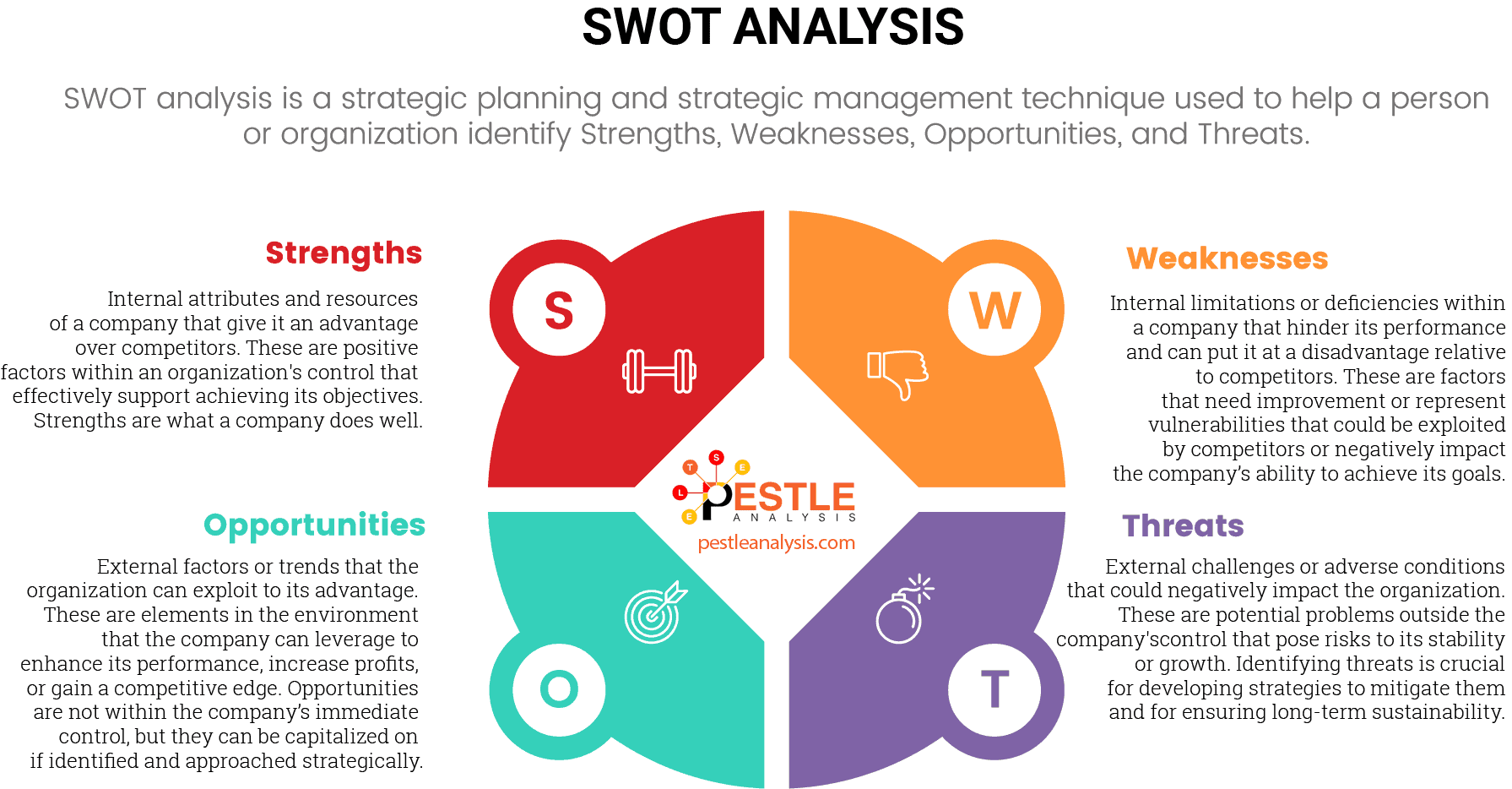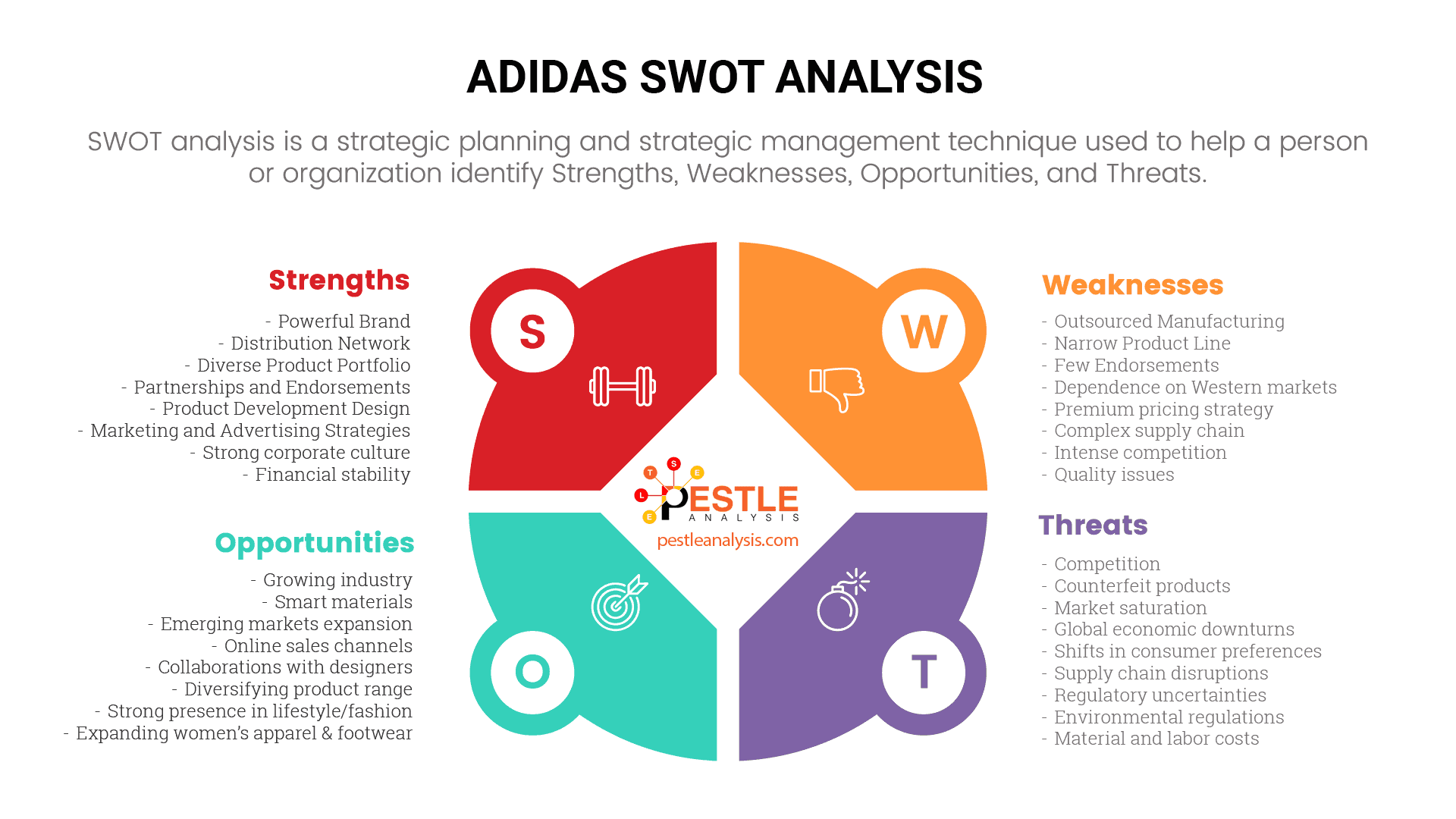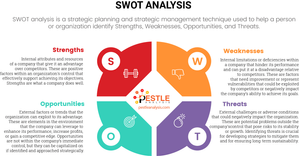SWOT analysis (Strengths, Weaknesses, Opportunities, Threats) is a strategic planning tool used in business and project management.
What is a SWOT Analysis?
SWOT analysis reveals the Strengths, Weaknesses, Opportunities and Threats of an organization. It's a strategic planning tool used in business and project management.
Here, I will discuss everything you need to know about SWOT analysis if you run across this analysis for the first time. In the next 10 minutes, you'll know more about SWOT analysis than 99% of people out there, as I'm explaining everything as concisely as possible. Let's start.
What does SWOT stand for?
Did you know that SWOT was initially known as SOFT analysis, standing for Satisfactory, Opportunity, Fault, and Threat before evolving into SWOT?
SWOT analysis now stands for these four words:
- Strengths (the 'S' in SWOT)
- Weaknesses (the 'W' in SWOT)
- Opportunities (the 'O' in SWOT)
- Threats (the 'T' in SWOT)
Now, let's take a closer look at each of those.
What are the 4 Steps/Components of SWOT Analysis?
These four components of SWOT analysis are split into two parts:
- The Internal Factors
- The External Factors
SWOT Analysis Internal Factors
Strengths and Weaknesses are considered the internal factors affecting a business.
- Strengths
Strengths in a SWOT analysis refer to the internal attributes that provide an organization, individual, or project a competitive advantage in the market.
- Weaknesses
The weaknesses are the internal factors that hinder the growth of an organization or project.
SWOT Analysis External Factors
Opportunities and Threats are considered the external factors affecting a business.
- Opportunities
Opportunities are the chances that lie in front of an organization to grow or a project to reach new highs.
- Threats
Threats in a SWOT analysis refer to external factors that could threaten the success of an organization or a project.
Why is SWOT Analysis important?
I've found that SWOT analysis has an edge over all the other tools since SWOT provides a complete picture of what internal and external factors impact a business, industry, or individual. In addition, SWOT analysis is a very simple tool to use by people like me who lack business education. Here are 6 reasons why SWOT is important:
- SWOT analysis helps organizations make well-informed operational decisions in general
- SWOT analysis helps organizations identify growth opportunities and develop strategies to capitalize on those
- SWOT analysis helps businesses to gain and hold a competitive advantage
- SWOT analysis helps businesses allocate their resources efficiently and maximize profits
- SWOT analysis helps organizations form strategies according to their external and internal environment
- By doing so, SWOT analysis ensures the long-term sustainability of a business
When to use a SWOT Analysis?
I use SWOT analysis when I find myself in any of the following scenarios:
- I am setting new goals or refining existing ones, either before launching a new project or when planning for the future of a business (strategic planning)
- I'm entering new markets and want to evaluate their potential and challenges, as I'm looking to launch new products or services (business growth and expansion)
- I'm looking to fix operational inefficiencies in a business or improve my project's standing (operational improvement)
- I'm identifying vulnerabilities to a project's process and want to predict the consequences of any change I attempt (risk management)
- I'm making a new investment or budgeting decision (resource allocation)
- I'm reviewing annual financial data and speaking with my team about any findings (organizational reflection)
- I'm considering a merger and acquisition
- I'm focusing on the R&D department and how technology can help my task (innovation and research)
In general, it's beneficial to conduct a SWOT analysis periodically, such as annually. Or at the very least, when preparing for important business decisions.
How to do and write a good SWOT Analysis
Writing a good SWOT Analysis is easy.
It's just listing the strengths, weaknesses, opportunities and threats you found. It's the research to unearth those valuable stats and reports that is hard.
So, I start by doing research online:
- Google is my friend
- I check media sites for the latest news on the company I'm analyzing
- Press releases can sometimes prove helpful
- The company's website might have some fresh data that isn't published elsewhere
- Social media and especially X (formerly Twitter) has been quite helpful in the past
- Forums like Reddit are my last resort
But my research doesn't stop when I turn off my computer. At times, real-life personal experience has provided me with a SWOT element I would have otherwise missed.
So, now that I've got my data, I still have one task at hand before conducting the SWOT analysis.
Sorting. Ranking my findings will help me pinpoint key elements of my SWOT analysis down the line and focus on what's important.
Now, I'm done with collecting my data. It's time to put it on the paper.
SWOT Table or Matrix

Whatever I found during my research and consider important for my SWOT analysis will be included in a SWOT table. For that, I'll have to draw a 2x2 table and label rows, columns and cells. After that, I'll have to fill each of these cells with my findings.
The final SWOT matrix will clearly highlight the points of improvement so that the business or project continues on the right path.
But if I'm doing a SWOT analysis for this website, I'll use our own template.
SWOT Analysis Template

This is the general SWOT template I use whenever I'm doing a SWOT analysis for PESTLEanalysis.com. I add the company's name to the title and replace the Strengths, Weaknesses, Opportunities, and Threats according to my research.
More often than not, these factors tend to be common between a lot of projects and companies. Especially if they operate in the same industry. So, don't be afraid if you run across the same factors for different companies.
For instance, technological innovation will likely be an opportunity for more than 90% tech companies you are analyzing!
Benefits and Limitations of SWOT Analysis
Let's check out a few benefits of SWOT:
- Everyone can do a SWOT analysis, even with no previous business experience, thanks to the internet's free information
- SWOT can find applications in many studies
- SWOT promotes discussion
- The analysis is visually pleasing
- SWOT offers valuable insight
- SWOT fosters collaboration
SWOT analysis can be somewhat limited nonetheless:
- SWOT might not be well-suited for positive thinkers since it focuses on the negatives more or less
- As a consequence, SWOT might not be that motivational to me or my team
- SWOT is not that proactive or action-oriented
- SWOT does not analyze the external factors as much as a PESTLE analysis does
- SWOT makes me think that last year's analysis may be still good this year; big mistake
- SWOT might make a threat look bigger than it actually is
That's why I tend to use SWOT analysis together with alternatives.
SWOT Analysis Example
Alright, now we've covered all that ground, let me show you how I did a SWOT analysis of Adidas recently.
I began by doing research on the company: economic reports, revenue and profit margin, when it started doing business, its history and background, etc. No matter how familiar I am with a popular company, I always discover new facts during my research. And these facts don't necessarily need to be strictly business.
If you've followed the website for a while, you'll know that I like including little-known facts about the companies I'm analyzing. When I check analyses done in the corporate world, I find them too 'professional.' As an outsider to the business realm and with no business degree, let alone a PhD under my belt, I like having a bit of fun while also getting the job done.
So, once I have a pretty good knowledge of the business' whereabouts, I start with strengths.
For Adidas, the powerful global brand name stood out immediately. Then came endorsements with athletes, proving Adidas' strong marketing game. Then I followed through with pinpointing more strengths and completed the first part.
For weaknesses, I looked into one of their main competitors, Nike. It turns out that Nike is doing a better job when it comes to partnering with celebrities. Also, common weaknesses of companies operating globally fell into place here as well. These include a complex supply chain and currency fluctuations. These will appear in more SWOT analyses that you think!
So, since Adidas has fallen back on their relationship with celebrities, this could pose as an opportunity for the company. Hence, I include collaborations with celebrities and designers as an opportunity, in an effort for Adidas to penetrate the fashion industry more and reach new audiences.
Once I had enough opportunities listed, I moved to the last part: Threats. When we're talking of a saturated and competitive market, competition will always threaten the top brands. It's one thing to reach the top, and it's another thing to stay there. Other threats I ran across were labor costs, environmental regulations, and technological advancements by competitors. For instance, Nike launched a new Air Max shoe, capitalizing on technological innovations that have been happening lately, which I only heard when I did a PESTLE analysis for Nike! You never know when one analysis will lead to an update on another!
Now, having a complete list of every component for my SWOT analysis, I was ready to fill in the blanks in my SWOT template.

Notice that the Adidas SWOT analysis is different than the SWOT template I included in the beginning.
More business analysis strategies
Before I wrap up, I have to remind you that SWOT is just one of many business analysis tools and strategies. Although I focus more on PESTLE analysis in this website, I may occasionally write about the following tools:
- If you haven't heard about PESTLE analysis, I've got you covered
- Porter's Five Forces assesses the competitive environment
- Value Chain analysis demonstrates that I should add as much value to my product as possible
- Ansoff Matrix, a strategic tool that tells me if I should sell new products or target new markets
- BCG Matrix, a business management tool based on dogs, cows and stars (yes, really)
- VRIO framework is used for internal analysis and focuses on resources
- SWOC analysis is similar to SWOT, since it substitutes (T)hreats with (C)hallenges.
Finally, the whole point of a SWOT analysis is to act on it, of course. Once someone has completed an analysis, they need to:
- Build on their Strengths
- Take care of their Weaknesses
- Seize Opportunities
- Never forget the Threats
And now you know more than 99% of the people out there about SWOT analysis!

